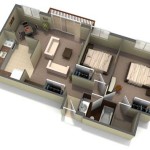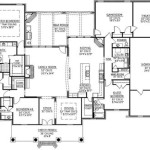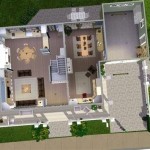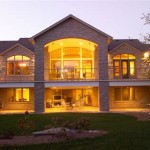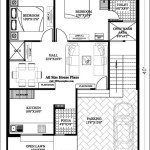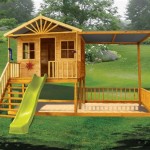Essential Elements of House Plan Section Elevation
When designing a house plan, it's crucial to carefully consider the section elevation, which provides a detailed vertical view of the building to ensure that the architectural design and spatial layout meet both functional and aesthetic requirements. In this article, we will explore the key elements of house plan section elevation and their significance.
1. Vertical Dimensions and Heights
The section elevation accurately depicts the vertical dimensions of a building, including the height of each story, the positioning of windows and doors, and the overall roof pitch. This information is essential for coordinating the structural design, ensuring adequate natural light and ventilation, and creating a harmonious exterior appearance.
2. Floor Plan Relationships
The section elevation illustrates how the different floor plans relate to one another vertically. It shows the interconnections between rooms, staircases, and balconies, helping architects visualize the flow of movement and spatial connections within the building.
3. Roof Structure and Pitch
The section elevation clearly displays the structure and pitch of the roof, revealing the composition of the roof system and its architectural impact. It allows architects to assess the suitability of different roofing materials, consider drainage strategies, and determine the overall aesthetic appeal of the house's exterior.
4. Mechanical and Electrical Systems
The section elevation can also incorporate the placement of mechanical and electrical systems, such as HVAC ductwork, plumbing pipes, and electrical wiring. By visualizing these systems within the vertical context of the building, architects can ensure efficient distribution, minimize potential conflicts, and optimize space utilization.
5. Interior Finishes and Details
In some cases, the section elevation may also include details of interior finishes, such as ceiling heights, molding profiles, and flooring materials. This level of detail helps architects visualize the overall interior ambiance and ensure that the spatial proportions and finishes align with the intended design concept.
6. Building Code Compliance
Section elevations play a crucial role in ensuring compliance with building codes and regulations. They demonstrate that the building meets minimum height requirements, provides adequate headroom, and adheres to accessibility and fire safety standards.
7. Architectural Expression
Beyond its functional importance, the section elevation can also contribute to the architectural expression of the building. It reveals the interplay between different building elements, such as the relationship between the roof and the walls, and the balance between mass and void. This interplay shapes the overall aesthetic character and identity of the house.
Conclusion
House plan section elevation is a fundamental aspect of architectural design, providing a comprehensive vertical representation of the building that helps architects refine the spatial layout, ensure structural integrity, coordinate mechanical and electrical systems, and achieve the desired architectural expression. By carefully considering the essential elements of section elevation, architects can create buildings that not only meet functional requirements but also evoke aesthetic appeal and enhance the overall user experience.

Scheme Of The Tested Single Family House A Front Elevation B Scientific Diagram

Floor Plan Elevation Sample House Plans Building

Pin On My Saves

I Ll Draw 2d Floor Plan Section Elevation In Autocad And Revit For 30 Freelancer Ekundayo Rilwan Realoneconsult Kwork

Floor Plan And Elevations For The New House Wildfire Interiors

The Plan Layout Elevation And Section Of A Traditional House Complex Scientific Diagram

About Frank Betz Associates Stock Custom Home Plans

House Plan Section And Elevation View Dwg File Cadbull

Simple House Elevation Section And Floor Plan Cad Drawing Details Dwg File Cadbull

Solved Need A Simple House Plan Site Sectional Chegg Com


